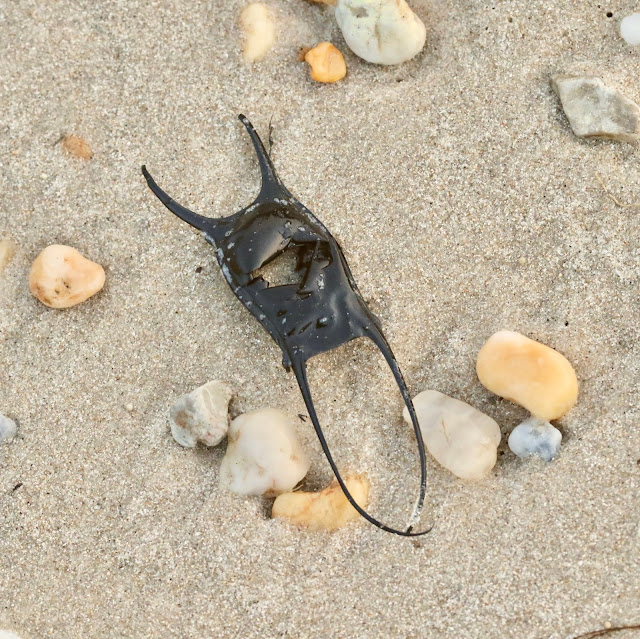 |
| Horseshoe crabs. |
Every spring, horseshoe crabs come out of the sea where they live their lives in order to lay their eggs on the beach. They have ten eyes of different kinds and blue blood. They are not crabs, but they are the closest living thing we have to the trilobites that once filled the oceans. They live throughout the east coast, but they especially favor the Chesapeake Bay. We decided to make the trip to see these very strange animals that have not changed significantly in 450,000,000 years.
The first time they come out of the water to mate, they are at least a decade old. They dig into the sand and bury their eggs, high on the shore where they will escape the many predators in the ocean. They choose only the spring dates when there are full and new moons, and correspondingly the highest tides of the year. They pick a spot to bury their eggs that is high enough above the water line for the best oxygen levels to help their eggs develop, but low enough that the eggs will not dry out. The eggs are laid by the thousands, and a single female may lay 60,000 to 120,000 per spring. You would think the odds would definitely favor a huge population of crabs. But some of their effort has always been wasted, because they can accidentally dig up eggs that were already laid.
Shorebirds have always depended on this otherwise wasted bounty. The red knot is the most famous example, a bird with one of the longest migrations on earth. Every spring, it travels from the southern tip of South America to the Arctic, a journey of over 9,000 miles. They precisely time a stopover in the Chesapeake Bay to eat the unearthed eggs, which are high in protein and fat. At this point in their journey they have used up their fat reserves. They double their body weight by feeding, and need every bit to finish their journey.
Horseshoe crabs have had to cope with humans developing on the shoreline and eliminating the areas they used to use for laying their eggs, as well as all kinds of harmful pollution we put in the water. Humans have also been overfishing horseshoe crabs for decades, and their population plummeted. Fishermen catching conch and eel have been cutting them up and using them as bait, and pharmaceutical companies have been draining their blood. They have been using their copper-based, blue blood to test drugs for the presence of bacteria. Draining only some of their blood and releasing them again has still resulted in a high percentage of deaths. Recently a synthetic version of their blood has been marketed to stop this practice, and a few states have limited but not banned fishing horseshoe crabs. However it will take time for the horseshoe crab population to rebound, which may be too late for the red knot.
We followed the detailed recommendations found here:
https://www.travel4wildlife.com/how-to-see-horseshoe-crabs-spawning-delaware-bay/. Because we were aiming for a high tide that would happen before the beach would legally be closed, last year we had no good times and this year, we had to leave without seeing vast numbers. But we did see hundreds of horseshoe crabs, and they were bizarre and amazing.
 |
| The dark shapes in the water are horseshoe crabs drifting in on the tide. |
 |
| A closeup of one of their compound eyes. |
 |
| The waves often turn them upside down. They just are not designed for land, so signs on the beach urge people to do them a favor and turn them over. They aren't dangerous in any way, so we turned over a LOT. |
 |
| A shark egg case. |
 |
| This is an egg case for a conch, a kind of sea snail. |


















Comments
Post a Comment
Hello! I love to read your comments, but please be aware that they are moderated. This will result in a delay before they are posted. Thank you for your patience.